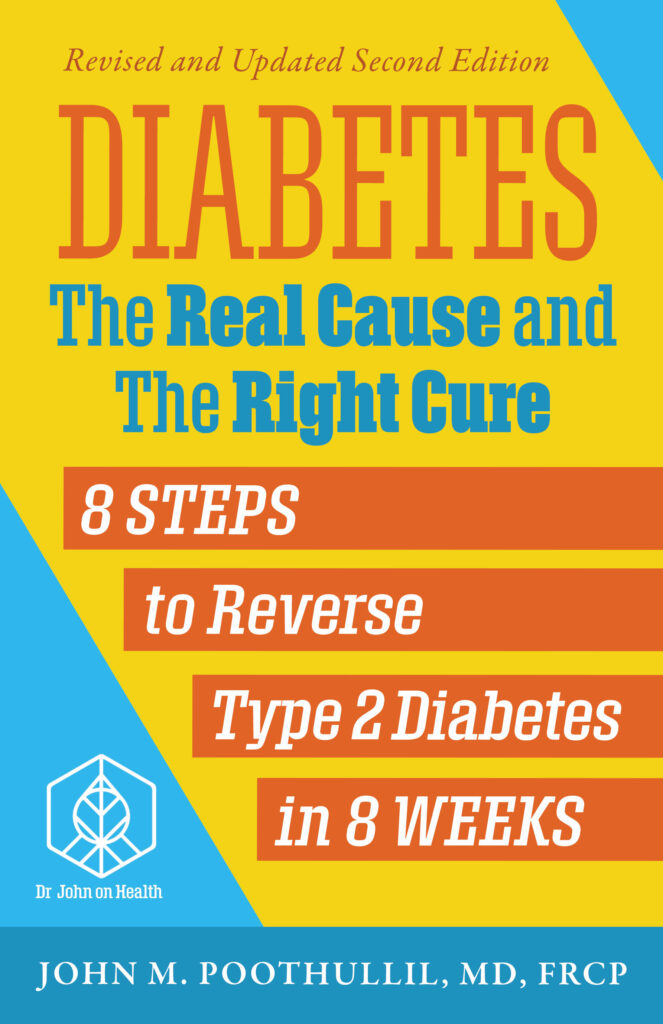This article was originally posted in the Daily Telegraph USA.
No question that reducing body weight leads to lower blood sugar levels. This is a recognized fact in the traditional treatment of Type 2 diabetes, although endocrinologists cannot explain why. While they claim that being overweight triggers insulin resistance, they are unable to explain the reverse because they will not say that insulin resistance disappears if you lose weight.
As per my theory on the cause of Type 2 diabetes, the connection becomes clear. By losing weight, you empty your fat cells of fatty acids that are being utilized for cellular energy. Eventually, your muscle cells will begin functioning by burning glucose, lowering your blood sugar.
How much weight do you need to lose to begin lowering your blood sugar?
I believe that the body has a natural “zone” of balance in which it functions at optimum levels to keep your blood sugar at the right level while providing you with enough energy for your daily functions. I call this zone your “authentic weight.” If you are overweight or obese, getting back to your authentic weight and maintaining it requires you to moderate your food intake to the amount of calories that your body can use before the next meal.

How can you know this?
In my view, each of us truly has a sense of our authentic weight because our brain tells us what it should be. Let me ask you right now: “What is your authentic weight”? If you focus on answering the question, you can likely get a good sense of what you should weigh.
Paying attention to your authentic weight is your brain’s way of signaling that you are healthy or that you are exceeding the right weight for you. When you are in tune with your authentic weight, you immediately know it if you gain an extra kilo. You start to feel uncomfortable; you sense your gut is pulling on your muscles. You feel sluggish and tired.
You cannot rely on standardized tables of height and weight to know your authentic weight.
Standardized weight tables are based on the average weight of thousands of people and usually have a wide range of pounds in each category. How can you know whether you should be at the lower or the upper end of that range?

Nor can you count on your BMI (body mass index) to determine your weight. In June 2023, the American Medical Association suggested that BMI, commonly used to categorize a person as underweight, normal weight, overweight, or obese based on weight and height, does not directly assess the effects of body fat mass on medical conditions such as hypertension and cardiovascular diseases at the individual level.
The reason for this is that BMI does not take into account the impact of comorbidities, lifestyle issues, gender, ethnicity, familial conditions, and aging on health. Yet another reason is the influence of eating disorders on fat accumulation. This suggests the need to reevaluate the impact of obesity in other situations such as insulin resistance that leads to high blood sugar, high serum triglycerides and polycystic ovary syndrome (PCOS).
Your authentic body weight is a measure of the total mass of all components of your body, including bone, muscle, organs, blood, fat, and water. The role of each of these components of the body in contributing to one’s weight differs in every individual in the world. Two people—one tall and small-boned with lots of muscle and another short and big-boned with regular muscle—could weigh the same.
Only you can intuitively know your authentic weight based on what your brain assesses.
Your authentic weight can also change as you exercise and age because the contributions of each component of weight can change. If you begin working out and adding muscle, you might gain muscle weight but your brain knows you are still in your authentic range because it considers your extra muscle mass. When you age and lose muscle, but gain 10 pounds in body fat, your brain will sense that your authentic weight is now largely composed of fat even though you may weigh the same.

To avoid Type 2 diabetes, your goal must be to take back control of your body and reclaim your authentic weight. If you are unable to rediscover your authentic weight, you can consider the body weight you had when you were in your mid-20s as a close approximation of it, provided your blood sugar and triglyceride levels were within normal range at that time. That is the age at which you might have probably reached your full height and your bones reached their maximum density. Any weight gain after that age reflects in general the increase in pounds you have added due to storing fat and/or building muscle. (For most people, as they age, weight gain is due to storing fat!)

Don’t let Type 2 diabetes or pre-diabetes control your life – start a delicious new journey to a healthier, happier you today!

Whether you were recently diagnosed or have had Type 2 diabetes for years, this book will open your eyes to new thinking about the real cause and an actual cure based on scientific thinking.
Understanding Dr. John’s explanation for the cause of diabetes opens the door to reversing it. The book provides an easy-to-implement 8-step program that will truly lower your blood sugar for good.
This new edition contains updated information and a new Appendix with over 20 FAQs about diabetes that are critical to your commitment to change your approach to eating.


